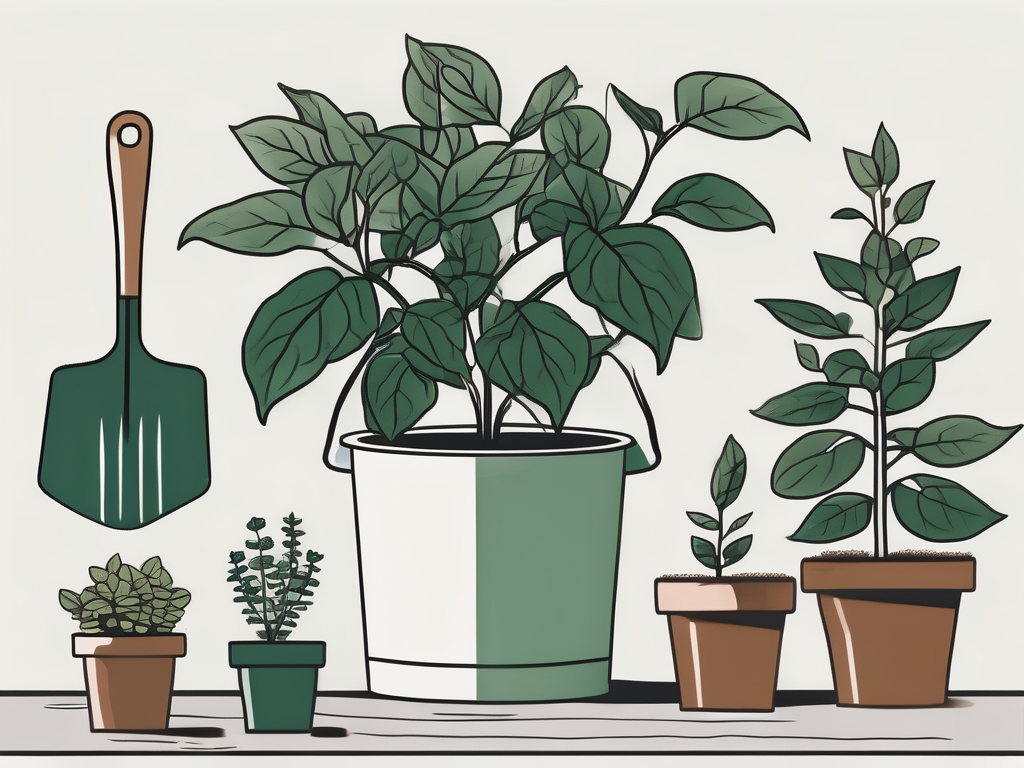
Have you ever considered adding a Cordyline to your home plant collection? Known for its striking foliage and versatility, the Cordyline plant is more than just a pretty face in your decor. These vibrant plants bring numerous benefits to your living space, making them a popular choice among plant people.
This article will explore the many advantages of incorporating Cordyline into your home. From improving air quality to adding a touch of nature's beauty, we'll cover everything you need to know. Let's discover what makes this plant a must-have for any home.
Understanding Cordyline: An Overview
Cordyline, often referred to as Ti plants, is a group of plants that come in a variety of colors and leaf shapes. They are native to the Pacific Islands, Southeast Asia, and parts of Australia, and have made their way into homes around the world due to their adaptability and aesthetic appeal.
These plants are easily recognizable by their long, slender leaves that can range from green to red, purple, and even a mix of several colors. They are often used as focal points in gardens and homes because of their striking appearance. But there's more to Cordyline than just good looks.
What makes Cordyline so appealing is its resilience. This plant can thrive in different environments, making it suitable for both indoor and outdoor settings. Whether you live in a small apartment or a house with a garden, Cordyline can adapt to your space, bringing a tropical vibe wherever it grows.
Improving Indoor Air Quality
One of the standout benefits of Cordyline is its ability to purify the air. Like many houseplants, it plays a crucial role in absorbing pollutants and releasing oxygen, which can help improve the air quality in your home.
Indoor air pollution can come from various sources, including household cleaning products, paint, and even furniture. These pollutants can contribute to health problems over time. By adding air-purifying plants like Cordyline to your home, you can help mitigate these effects. Cordyline can absorb volatile organic compounds (VOCs) and other harmful substances, making your living environment healthier.
Moreover, having plants indoors can help maintain humidity levels. Cordyline releases moisture into the air through a process called transpiration, which can be particularly beneficial in dry climates or during winter months when indoor heating can dry out the air. This natural humidifying effect can make your home more comfortable and reduce the risk of respiratory issues.
Aesthetic Appeal: Adding Color and Style
If you're looking to add a pop of color and style to your home, Cordyline is an excellent choice. Its vibrant leaves can complement a wide range of interior designs, from modern to bohemian, and everything in between.
Cordyline plants come in a variety of colors, making it easy to find one that suits your aesthetic preferences. Whether you prefer the deep reds of the Cordyline fruticosa or the striking greens of the Cordyline australis, there's a variety to match your style. The plant's bold foliage can serve as a centerpiece in any room, drawing attention and adding visual interest.
In addition to their color, Cordyline plants can add texture to your decor. Their long, arching leaves create a dynamic contrast against smooth surfaces and can be used to soften the lines of furniture. By incorporating Cordyline into your design, you can create a more layered and visually appealing space.
Easy to Care For: A Plant for Everyone
One of the biggest hurdles for new plant parents is finding a plant that is easy to care for, and Cordyline fits the bill. It's a low-maintenance plant that can tolerate a range of conditions, making it suitable for both beginners and experienced plant lovers.
Cordyline prefers bright, indirect light but can also tolerate lower light conditions. This flexibility makes it a great option for various spots in your home, whether it's near a window or in a slightly shaded corner. Just keep in mind that more light often results in more vibrant foliage.
Watering is straightforward with Cordyline. Allow the top inch of soil to dry out between waterings, and be careful not to overwater, as this can lead to root rot. During the growing season, usually spring and summer, you might want to water a bit more frequently, while in the winter, the plant will require less.
Fertilizing is only necessary during the growing season. A balanced, water-soluble fertilizer every month or so will help keep your Cordyline healthy and vibrant. This straightforward care routine makes Cordyline an accessible choice for anyone looking to add greenery to their home.
Versatility: Perfect for Indoor and Outdoor Spaces
Cordyline's adaptability doesn't stop at its care requirements. It's also a versatile plant that works well in both indoor and outdoor settings. Whether you have a cozy apartment or a spacious garden, Cordyline can fit right in.
Indoors, Cordyline can be used to create a tropical feel in any room. Its bold foliage can complement various decor styles, and its size makes it suitable for small spaces. Place it in a decorative pot to add a personal touch and enhance its visual appeal.
Outdoors, Cordyline is an excellent addition to gardens and patios. It can be planted in the ground or in containers, depending on your space and climate. Cordyline is hardy in zones 9-11, but it can also be grown as an annual or brought indoors in colder climates.
When planting Cordyline outside, consider its mature size and provide enough space for it to grow. It's also essential to ensure good drainage, as Cordyline doesn't like to sit in soggy soil. With proper care, Cordyline can thrive outdoors, adding a splash of color and texture to your garden.
Pest and Disease Resistance
Another reason Cordyline is a favorite among plant people is its resistance to pests and diseases. This robust plant isn't usually bothered by common houseplant pests, making it a stress-free addition to your collection.
However, like any plant, Cordyline can occasionally attract unwanted visitors, such as spider mites or aphids. Fortunately, these pests are relatively easy to manage. A gentle spray of water can often dislodge them, or you can use insecticidal soap if the infestation persists.
In terms of diseases, Cordyline is generally quite hardy. It's less prone to fungal issues compared to other houseplants. To keep your Cordyline healthy, avoid overwatering and ensure good air circulation around the plant. These simple practices can prevent most common issues and keep your Cordyline looking its best.
Symbolism and Cultural Significance
Cordyline isn't just a pretty plant; it also holds cultural significance in many parts of the world. In Hawaii, for example, the Ti plant (Cordyline fruticosa) is considered sacred and is often used in traditional Hawaiian rituals and ceremonies. It's believed to bring good luck and protection, making it a meaningful addition to any home.
In other cultures, Cordyline is seen as a symbol of strength and resilience due to its hardy nature. This symbolism can add a layer of depth to your home decor, reminding you of the plant's cultural roots and the positive energy it brings.
By incorporating Cordyline into your home, you're not just adding a plant; you're inviting a piece of cultural history and symbolism that can enrich your living space. It's a plant that can inspire and remind us of the diverse traditions and meanings attached to the natural world.
Enhancing Your Well-being
Beyond its aesthetic and practical benefits, Cordyline can also contribute to your overall well-being. Studies have shown that having plants in your home can reduce stress, improve mood, and increase productivity. Cordyline, with its vibrant colors and easy care, can be a source of joy and relaxation.
Taking care of plants like Cordyline can be a mindful activity that helps you slow down and reconnect with nature. The simple act of watering, pruning, or just admiring your plant can be a form of self-care. Many plant lovers find that their green companions bring a sense of calm and satisfaction to their daily lives.
Cordyline's bright and cheerful appearance can also have a positive effect on your mental well-being. The colors and textures of its leaves can stimulate creativity and add a sense of vitality to your space, making it a perfect companion for home offices or creative studios.
Designing with Cordyline
Incorporating Cordyline into your home design can be a fun and rewarding process. Its bold foliage makes it a versatile element that can complement various decor styles, from minimalist to eclectic.
Here are a few ideas for designing with Cordyline:
- Focal Point: Use Cordyline as a centerpiece on a dining table or coffee table. Its vibrant leaves can draw attention and add a splash of color to your space.
- Mix and Match: Combine Cordyline with other tropical plants like ferns or palms to create a lush indoor garden. The different textures and colors can create a dynamic and visually appealing arrangement.
- Accent Plant: Place Cordyline in a decorative pot and use it as an accent plant in a room. Its bold appearance can complement neutral tones and add interest to a minimalist space.
With a little creativity, you can find the perfect spot for Cordyline in your home. Whether it's a single statement plant or part of a larger arrangement, Cordyline can bring life and energy to your space.
Final Thoughts
Incorporating Cordyline into your home offers numerous benefits, from improving air quality to adding aesthetic appeal. Its easy-care nature makes it a perfect plant for anyone looking to enhance their living space with a touch of nature. Whether you're a seasoned plant parent or a beginner, Cordyline can thrive in many environments, bringing vibrancy and joy to your home.
At Cafe Planta, we're passionate about helping you care for your plants and create a beautiful, thriving plant collection. We offer a variety of houseplants, plant care accessories, and even plant-themed apparel for plant lovers. If you have any questions or need advice, feel free to email us or reach out via Instagram. We believe that plants have the power to bring people together and inspire us to connect with nature. Whether you're just starting out or have a green thumb, we're excited to share our love of plants with you!












